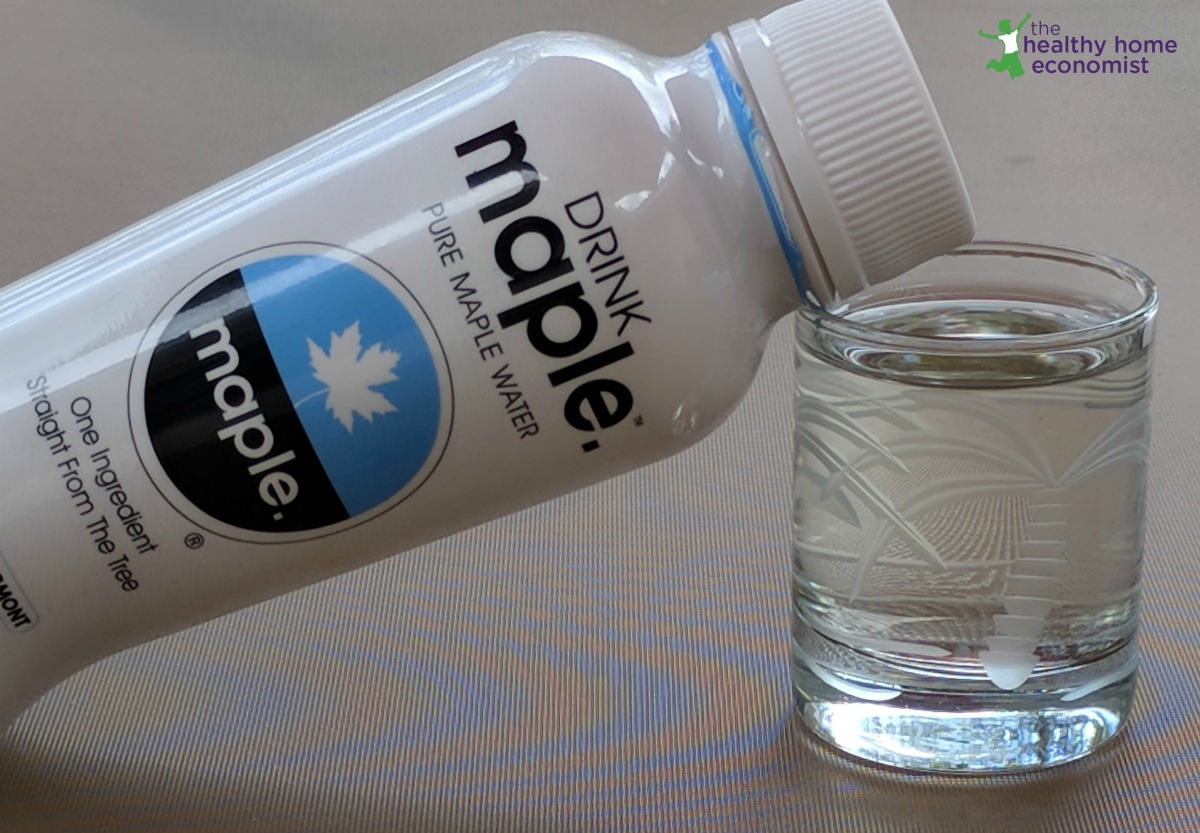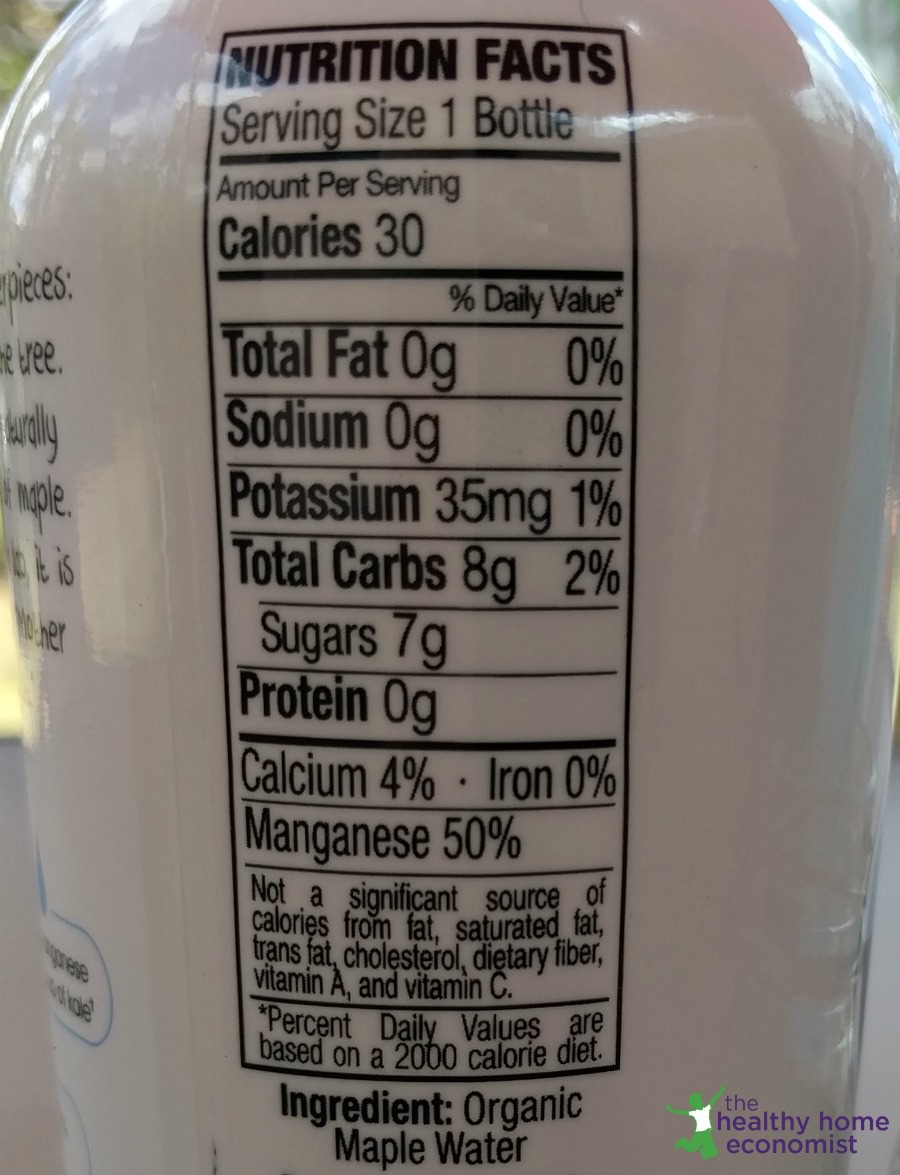 The beverage industry continues its scramble to introduce an ever-widening array of health-focused drinks to a consumer base increasingly leery of soda and other sugary and artificially sweetened offerings. Maple water is one such beverage that has quickly caught on with those seeking a more delicious way to hydrate and replenish electrolytes naturally.
The beverage industry continues its scramble to introduce an ever-widening array of health-focused drinks to a consumer base increasingly leery of soda and other sugary and artificially sweetened offerings. Maple water is one such beverage that has quickly caught on with those seeking a more delicious way to hydrate and replenish electrolytes naturally.
In particular, endurance athletes and vegetarians are attracted to this brilliantly marketed option to embrace “plant-based hydration”.
Mmmm. Chemistry teaches us that water is simply the combination of 2 atoms of hydrogen to one atom of oxygen. That’s neither plant nor animal, right?
I guess that’s beside the point …. or is it?
Does water from a maple tree really offer any benefits beyond a simple glass of spring water with a pinch of sea salt and a squeeze of lemon? Does it warrant a price tag of $2-4 for a 12 ounce bottle and the petroleum based processing and plastic packaging necessary to place it on a store shelf for consumers to conveniently grab and go?
Let’s find out!
What is Maple Water?
Contrary to popular belief, maple water is not maple syrup diluted with water, aka “maple syrup water”. In fact, it is actually the pure maple sap that comes straight out of a tapped maple tree.
When you think of the word “sap”, you might simultaneously think of the words sticky and amber-colored. Surprisingly, the sap from a maple tree is actually clear and very much non-sticky.
Maple sap is simply the water from a maple tree. It has a very mild, maple-y flavor and some beneficial electrolytes. Birch water is very similar, with the exception that it comes from tapped birch trees.
The production of maple syrup involves boiling down the clear, thin maple sap to the familiar, thickened brown liquid that is a delicious, natural sweetener. But, before it gets to this state, the syrup is actually just maple tree water.
Pure Maple Water Imposters
In a nutshell (or a samara to be exact!), real maple water is just the sap that flows from tapped maple tree. Some beverage manufacturers also market the water leftover from the maple syrup making process as the same thing.
This is not pure maple water, so buyer beware!
Maple Water Nutrition
Maple sap water consists of about 98% water and 2% sugar. It contains the same sugar as maple syrup. Thus, it is a disaccharide (double sugar) and not the simple, easily digested glucose found in honey or the fructose in fruit. Hence, those on gut healing diets like GAPS should avoid it.
Some maple water sources claim that it is lower in sugar than coconut water. If this is true, it is by the most miniscule of margins. My research suggests that they are virtually identical sources of carbs with each 12 ounce serving containing 7-8 grams of sugar.
Minerals
Potassium is the one of the most notable minerals in maple tree water. A 12 ounce serving contains about 35 mg of potassium. However, this represents less than 1% of the average person’s daily need for this nutrient (4700 mg).
By comparison, a banana contains 422 mg of potassium. Coconut water has even more with a whopping 622 mg per cup.
Potassium is one of the most essential electrolytes necessary for daily functioning. Exercise and sweating rapidly deplete it. As a result, maple water should not be considered a good source of this nutrient for replenishment purposes.
Calcium and a tiny amount of iron are also present in maple water. Manganese levels are higher, with a 12 ounce serving providing 50% of the necessary daily value.
 Is Drinking Pure Maple Water Good for You?
Is Drinking Pure Maple Water Good for You?
Drinking pure maple water containing small amounts of electrolytes is certainly a good thing. Proper hydration is necessary for optimal health. It’s certainly better than nasty Vitaminwater and other similar pseudo-nutraceutial waters.
However, I have concerns that using maple water for this purpose has an unexpected downside. How? The brands I examined are not filtered before bottling.
Thus, to avoid exposure to any toxins in the environment where the maple trees grow, it is best to source organic maple water (this brand is the best from my research).
This may seem a strange recommendation since maple trees within a sugar bush are rarely sprayed. Watch out, because maple tree farms sometimes use herbicides like Roundup and chemical pesticides to control unwanted vegetation. They may also periodically use chemical fertilizers to hasten tree growth.
Another concern I have is for flavored maple tree water varieties. The ones I checked contain the ubiquitous “natural flavors” as well as MSG contaminated citric acid. These ingredients are not safe even if organic. So drink only plain maple water if this is something you wish to try.
Enzymes and Probiotics
Whether maple water is fresh from the tree or a by-product of maple syrup production, it is heat treated for sterilization purposes. Thus, it is not raw maple tree water as any enzymes and probiotics are destroyed by processing.
Maple tree water companies claim that the minerals, polyphenols and antioxidants remain after heat treatment. While minerals and anti-oxidants are not damaged, polyphenols are known to be heat sensitive. The good news is that phenols are not significantly harmed until temperatures of 350 F/ 180 C are reached. Since flash pasteurization temperatures are much lower than this, the likelihood that the phenols are undamaged is high.
Is Maple Tree Water Worth It?
As mentioned at the beginning of the post, I don’t see any benefits of drinking maple water over the much less expensive and easily made option of homemade electrolyte drinks.
I personally cannot justify $2-4 for a 12 ounce bottle of water that required damaging the environment with petroleum guzzling factories and trucks to bottle and deliver to a store in my community (or worse, straight to my front door).
I would prefer the pennies per ounce cost of filtered spring water from my own kitchen tap enhanced when needed with a bit of sea salt and a squeeze of enzyme and probiotic-rich fresh fruit.
Is maple water truly a “one ingredient straight from the tree” product? Not if you include all the other ingredients necessary to produce it!
In sum, enjoy a bottle of plain maple water (never flavored) on occasion if you are traveling or your filled at home, reusable water bottle runs dry unexpectedly. This brand is safe and of good quality.
But, please don’t think that relying on this product as a primary source of H2O is a good idea for you or the planet.








the left over water is what remains from the RO process, it’s basically the crystallized water that is removed.
What exactly is the water leftover form making maple syrup? We have been making syrup for a couple of years now and can’t think of what water that would be.
It is my understanding that it is the steam that comes off the boiling syrup …. collected and condensed back into water. This is a step in a large maple syrup manufacturing process. If you are making it yourself at home, it would not be something you would likely do.
Dear Sarah, I recently heard of lucuma, the Brazilian fruit used in a variety of dessert products and as a sugar substitute. I’m trying to cut my after-dinner sweet habit, would you kindly give your opinion about whether this is a healthy option? Do you have any suggestions? I find that I can’t eat chocolate in moderation!
Interesting. I haven’t heard of it. I will look into it. Might be worth an article If I can find some research on it 🙂
This was timely given that my main source of maple water is my own backyard tree. My house is filled with the aroma of sap boiling on the stove as I type this. I have buckets of the real thing slowly filling day by day thanks to two very hardworking trees and a delayed spring. Home harvesting is easy, with minimal equipment required, and a perfect source of free maple water if you just have a tree, or access to one.
I agree .. if you can get fresh, unpasteurized maple water by tapping your own trees, then go for it. I don’t think the sterilized, packaged in plastic bottles for commercialization is a good idea though. Too wasteful and really adds nothing that a quick glass of filtered water, a squeeze of fruit and a pinch of sea salt won’t give you.
Probiotics aren’t found in fruits, trees, or vegetables. They are found in fermented foods such as kimchi, tempeh, kombucha, kefir, etc, because of the bacteria. Coconut water has 2.7% sugar content to maple sugar’s 2% AND those with gut-healing diets need not avoid minuscule amounts (2%) of Maple water—such small quantities will be easily digested. Lastly, Roundup is an herbicide that kills tree roots, so maple farmers typically wouldn’t want to use them unless they wanted to kill all their business. Typically maple water can be a “one ingredient straight from the tree” product, especially DRINKmaple, the brand you linked. They treat their water to kill and yeast or harmful bacteria. What you should “research” next, my dearest Ivy League graduate, is the effect of misinformation surrounding the food industry.
Of course probiotics are on fruits, nuts and vegetables if they are unwashed and unsprayed! Good bacteria reside on the surface of all living things! They are on your skin right now if you haven’t killed them off with chemically laced personal care products 🙂
If you have your own organic garden and are able to pick and eat immediately … you are ingesting extremely beneficial soil based probiotics which traditional peoples benefited from every single day. Most modern people rarely if ever experience these benefits due to only consuming overly processed and sterilized food.
Fermentation simply enhances and strengthens what is already there. This is why it is so easy to ferment organic plants by releasing a bit of their juice (as in pounding cabbage for sauerkraut) and adding nothing but salt. No culture is even needed because the probiotics are already on the cabbage!!
The Pacific ocean plastic garbage patch is now twice the size of Texas. No wasteful plastic bottles for maple water or any kind of water for me.